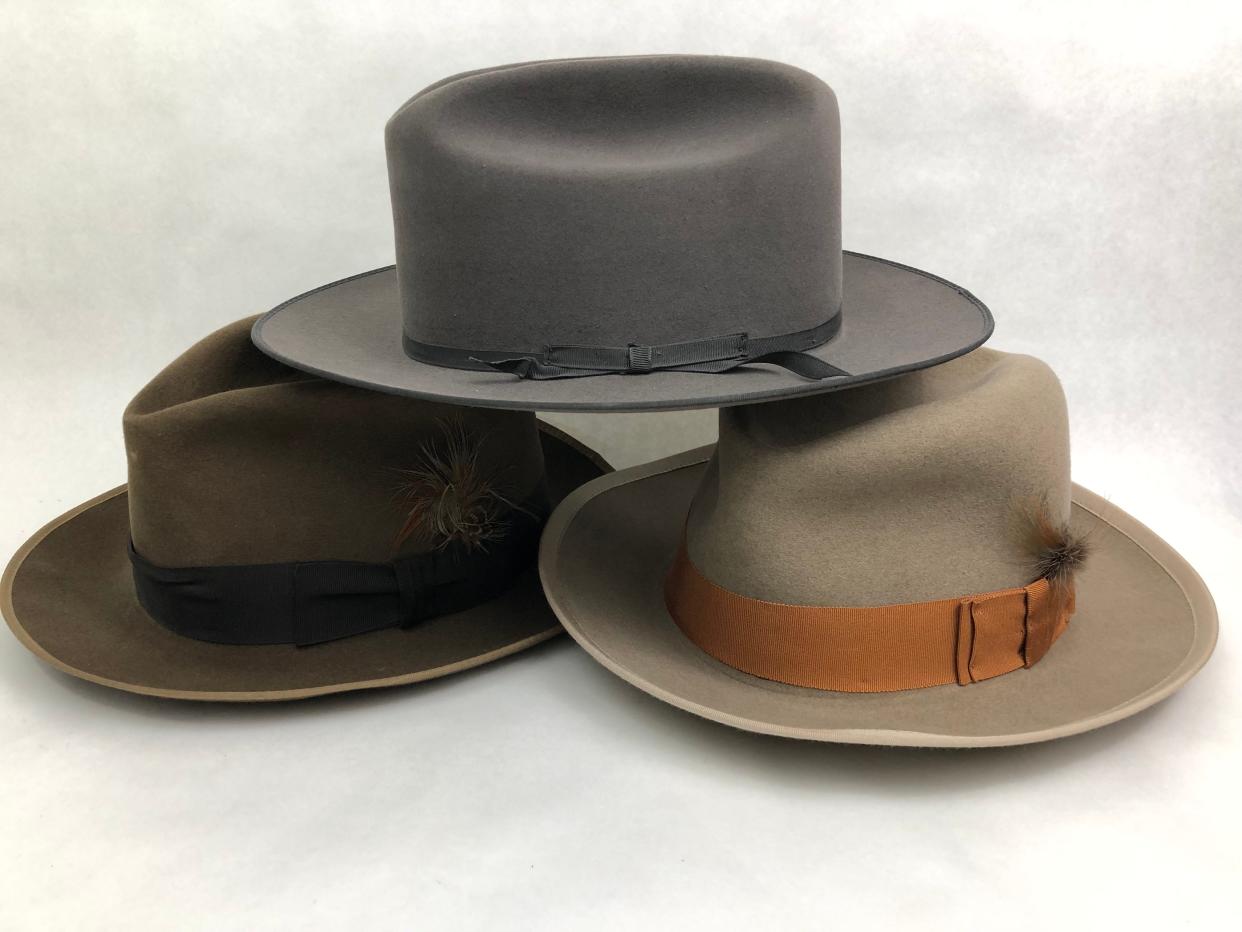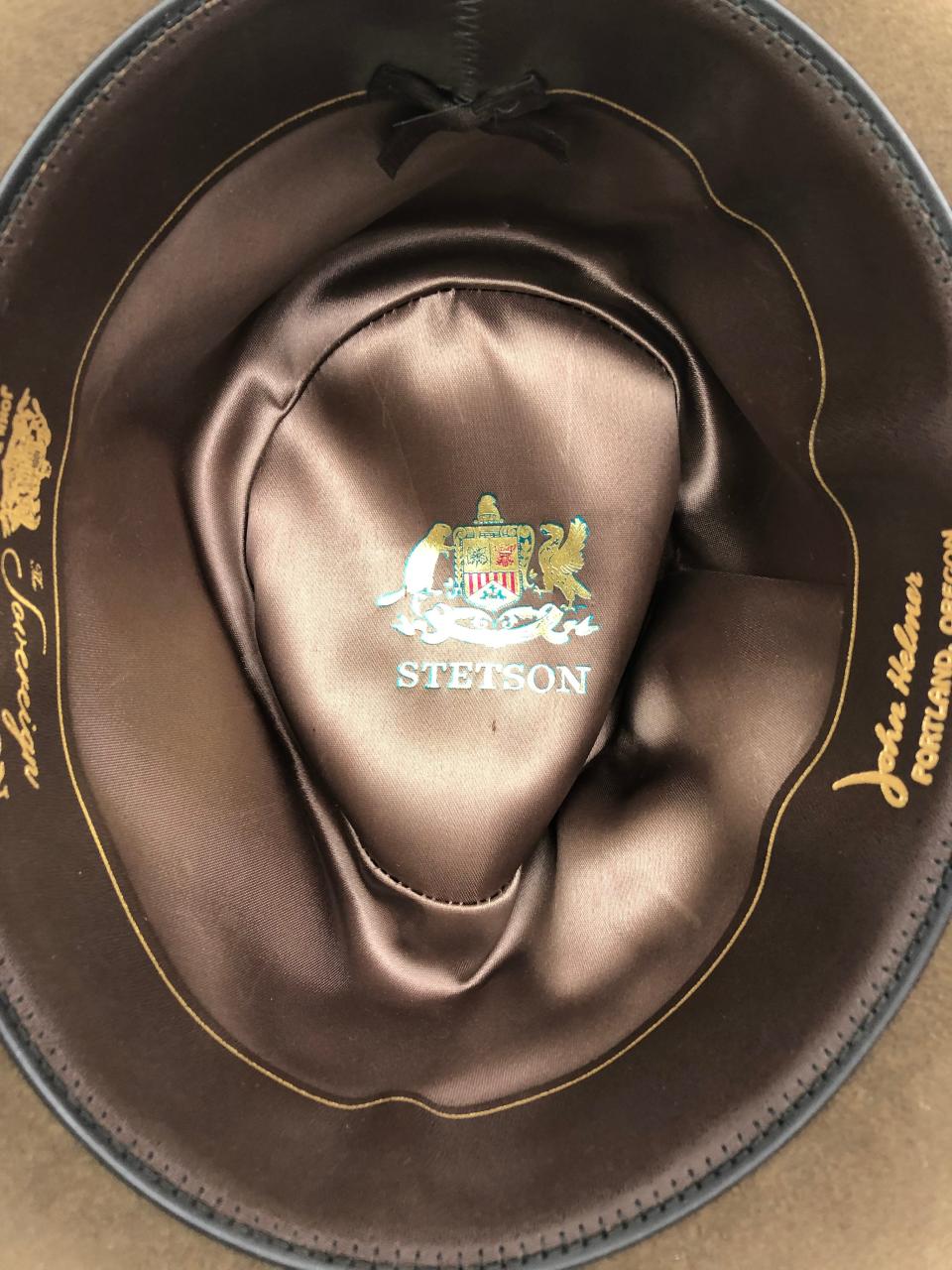Antiques: The hat says it all

- Oops!Something went wrong.Please try again later.
One of the great aphorisms of all time is that which describes the affectations of an upward climber (and maybe George Santos): all hat and no cattle. While this column won't help with the cattle, it might do something for your knowledge of hats; specifically, Stetson hats. There's simply no more recognizable name in the history of hats than Stetson. They've been making best-of-breed models for more than 150 years. Pardner, if they don't have it down by now, they aint never gonna figger it out. So forget Granny's warning and put your boots on the table. We're gonna school ya about hats.
John B. Stetson was a good looking feller who headed west from his home in New Jersey during the gold rush to make his fortune. His pa, Stephen, was a hatmaker, so young Johnny already knew a bit about hats before he set off. While in Colorado, he was dazzled by the western sun and thus made an extra-wide brim hat for himself out of beaver felt. It had an unusually deep crown to allow for air to circulate around the head and was tightly woven enough so as to carry water. As the story goes, a local cowboy saw the hat, wanted it for himself, and wound up paying Stetson a genuine $5 gold piece to get it. The cowboy rode off happy and Stetson returned east with an idea for a new business.
Following the Civil War, Stetson set up shop in Philadelphia and introduced a few unremarkable hats before coming out with his iconic "Boss of the Plains" model. The hat was modeled after the one he had made for himself and proved to be an instant success. Not cheap, it was a statement hat that conveyed to the world the success of its wearer. Within 10 years, the name Stetson was known to every real and wannabe cowboy, and by 1886, he was among the largest hatmakers in the world. Even as the cowboy era ended at the conclusion of the 19th century, Stetson was still cranking out hats by the millions.

As the 20th century got underway, America's taste in headwear began to change, but clever marketing kept Stetson in the forefront. Its hats became must-have wardrobe items for such Western celebrities as Buffalo Bill, Calamity Jane, and Annie Oakley. Western movies were rife with Stetson hats, and the legendary "10 Gallon" model emerged as a symbol of Texas culture. Interestingly, the name had nothing to do with the hat's capacity to hold water, but rather referred to the number of braids ("galóns" in Spanish) used in Stetson hatbands. At its peak, the company's reach was international, but by the end of WWII, the world's taste for hats had irrevocably waned. A millinery department making women's hats never took hold, and by 1968, the Stetson Hat Company was finished, the brand sold to others.
Nonetheless, original Stetson hats live on, the demand constant among collectors and enthusiasts. They turn up in vintage clothing stores and galleries like ours, and they never stay on the shelf for long. A new-made Boss hat will set you back around $200, but some made with exotic pelts can creep into four figures. If you're looking for vintage Stetsons, make sure there's a nice big Stetson label on the hat's underside. A good clean one might run you a hundred bucks, but you can almost hear the chuckwagons rumble when you put it on.

Mike Rivkin and his wife, Linda, are longtime residents of Rancho Mirage. For many years, he was an award-winning catalogue publisher and has authored seven books, along with countless articles. Now, he's the owner of Antique Galleries of Palm Springs. His antiques column appears Sundays in The Desert Sun. Want to send Mike a question about antiques? Drop him a line at info@silverfishpress.com
This article originally appeared on Palm Springs Desert Sun: Antiques: The hat says it all

